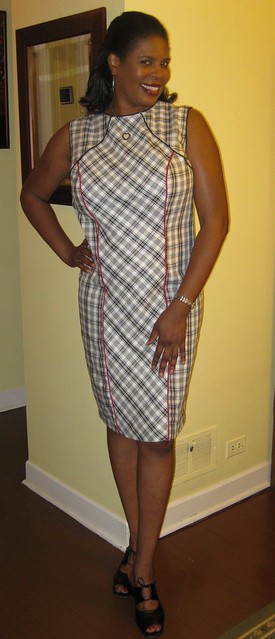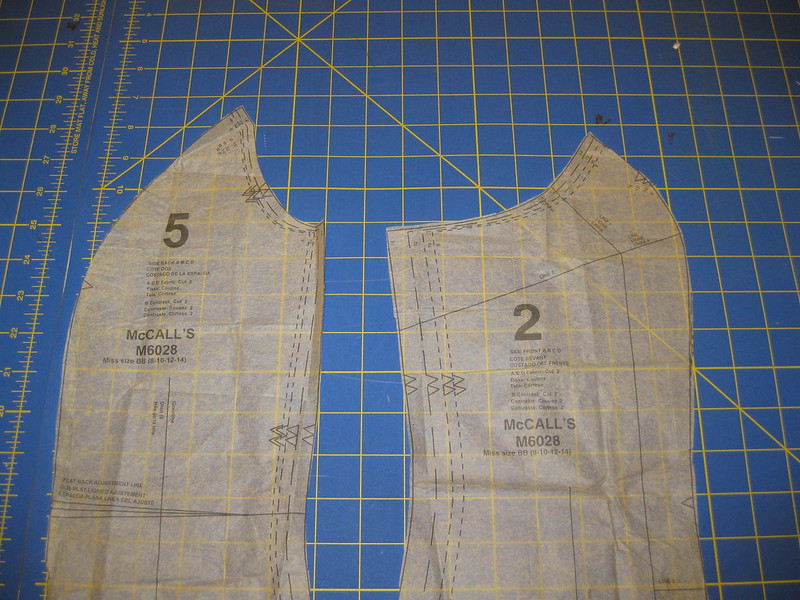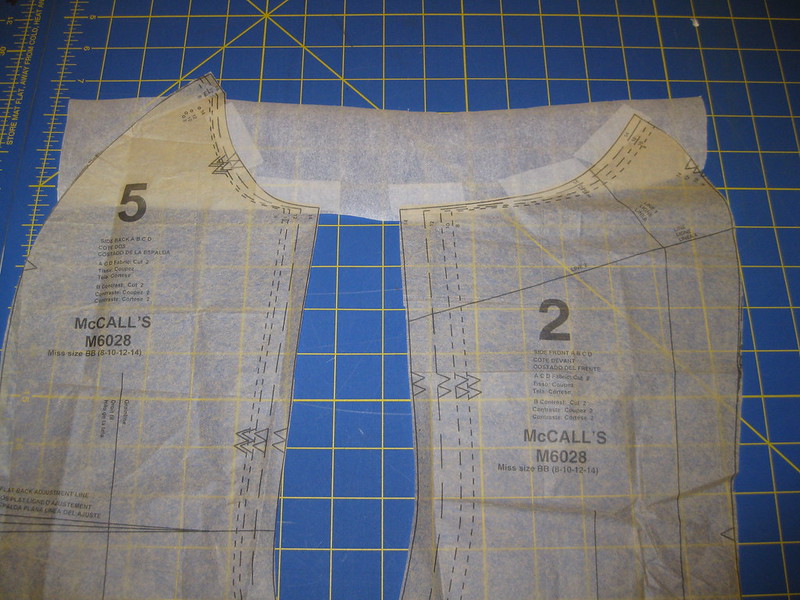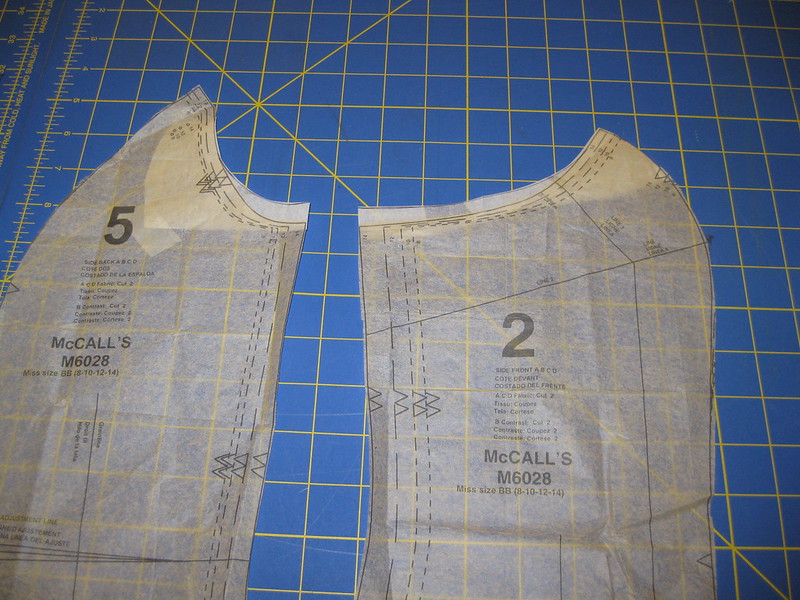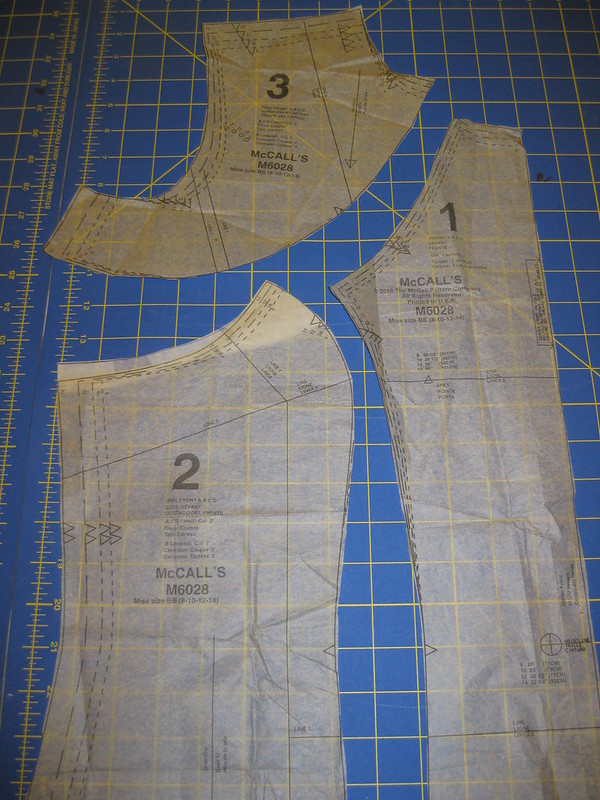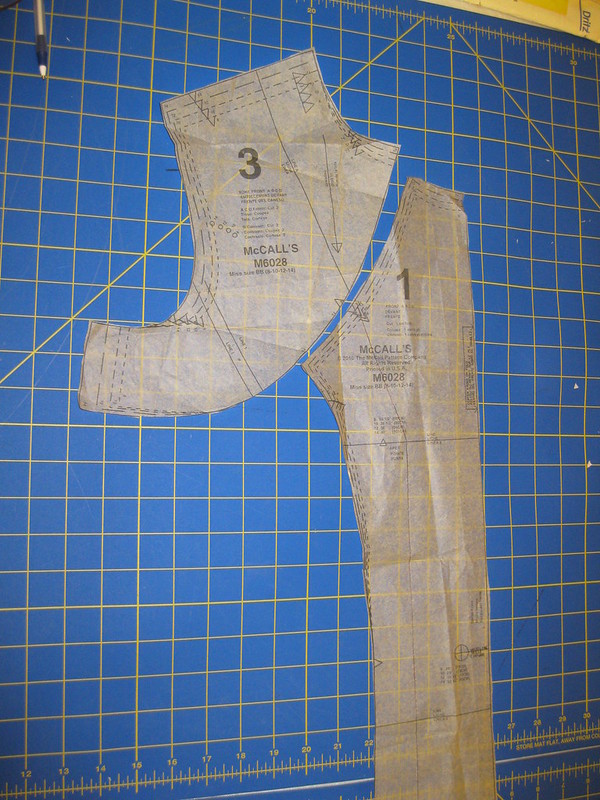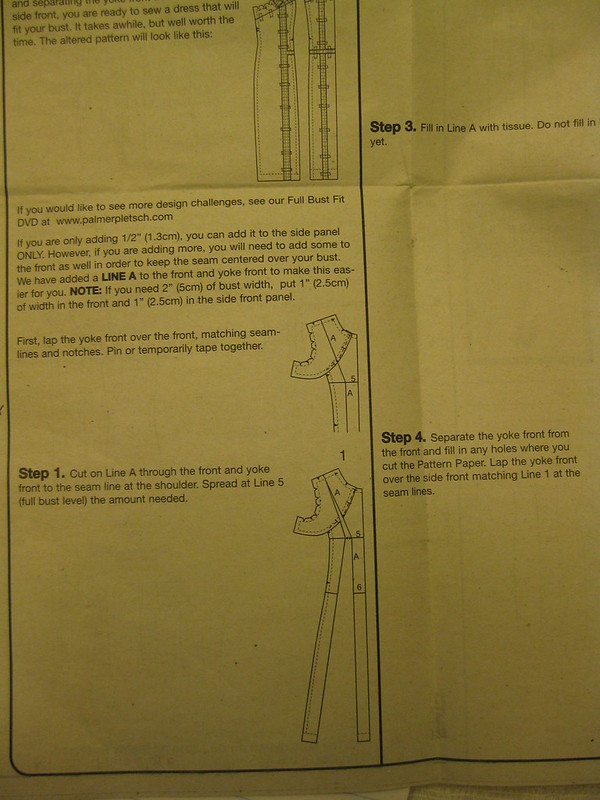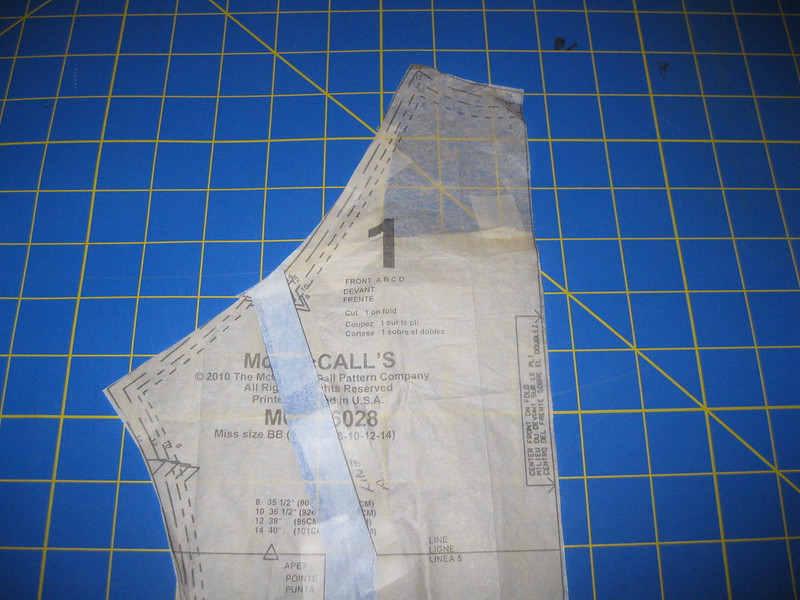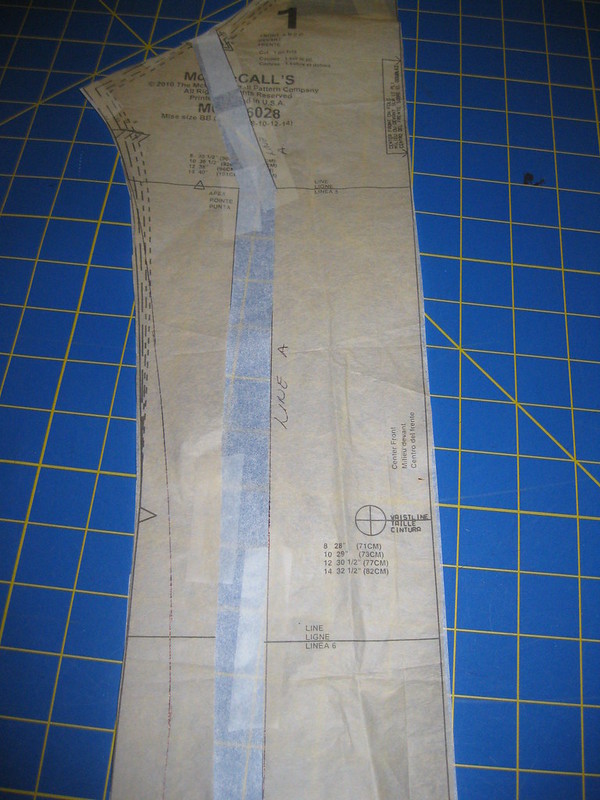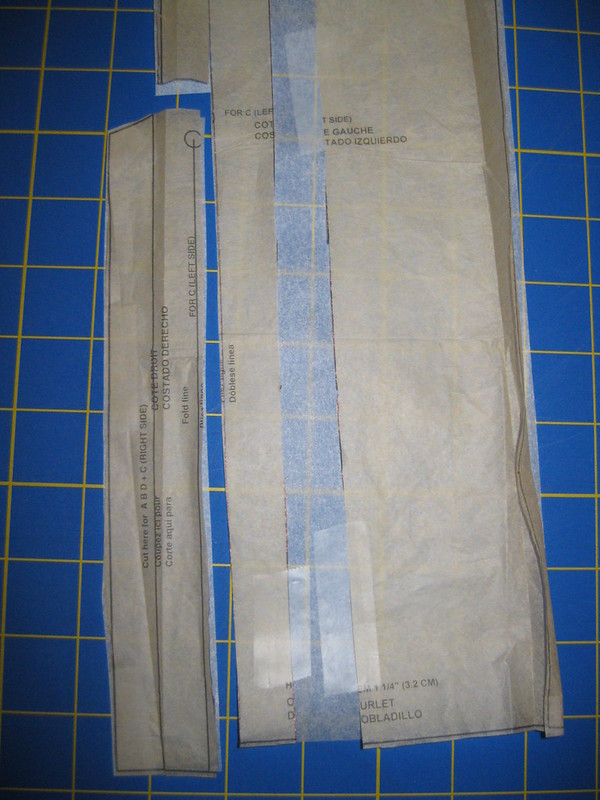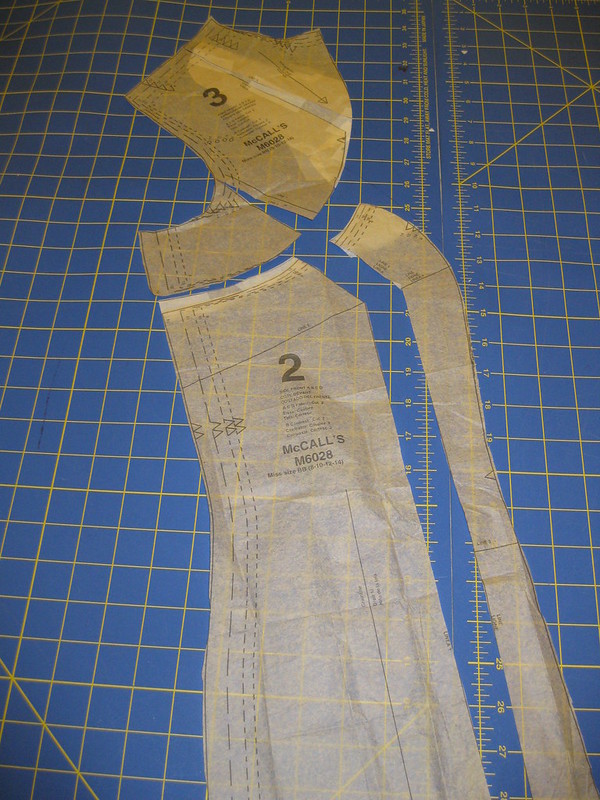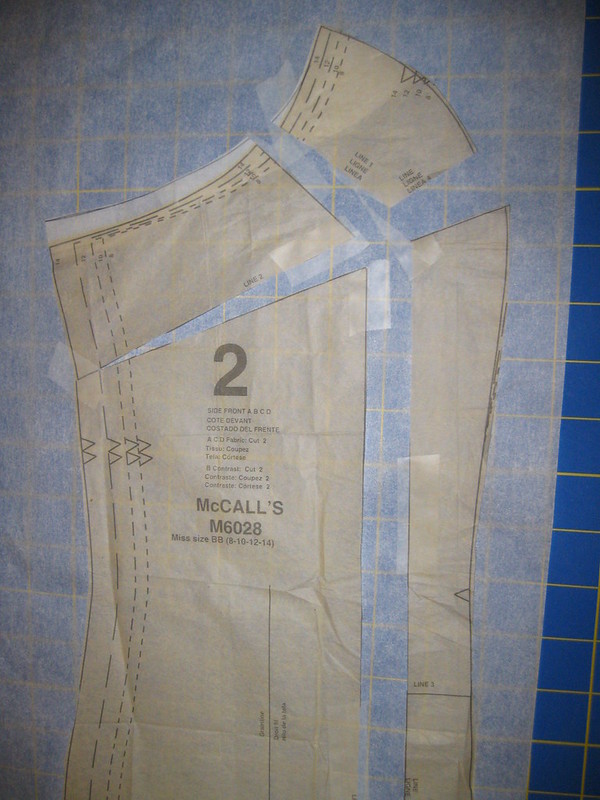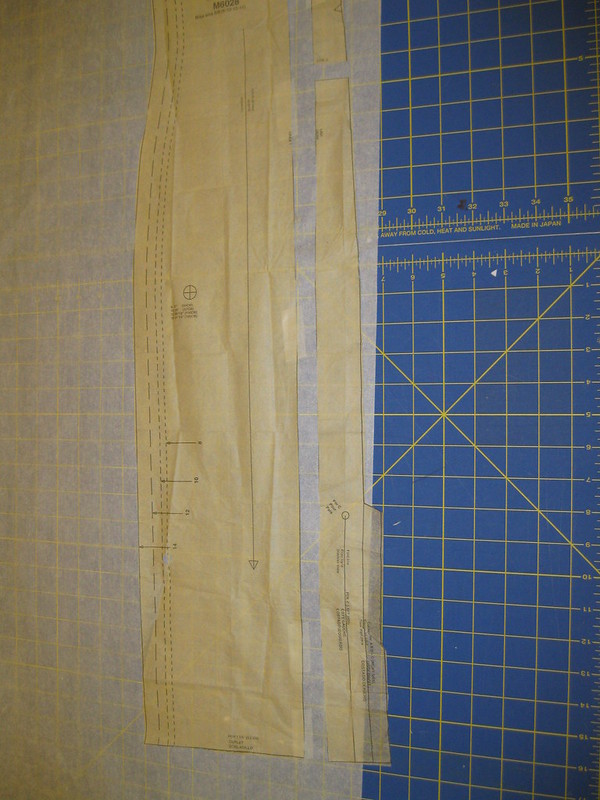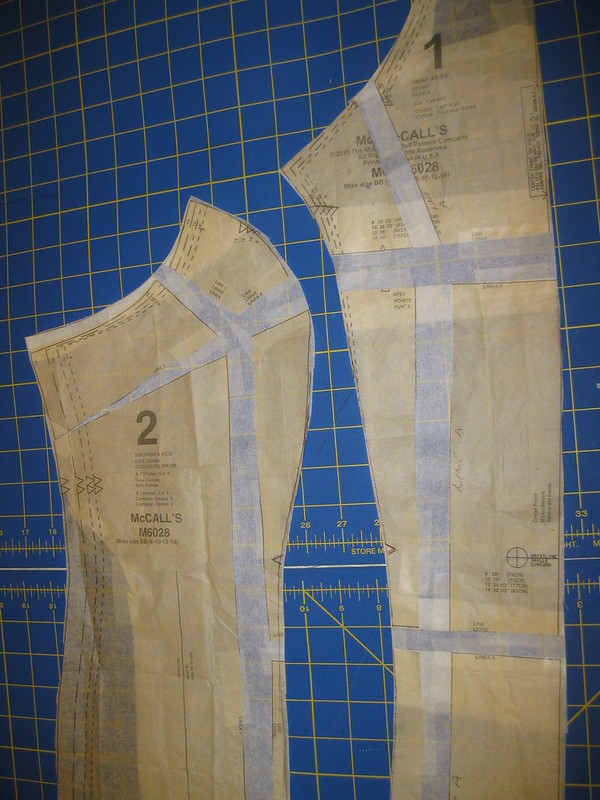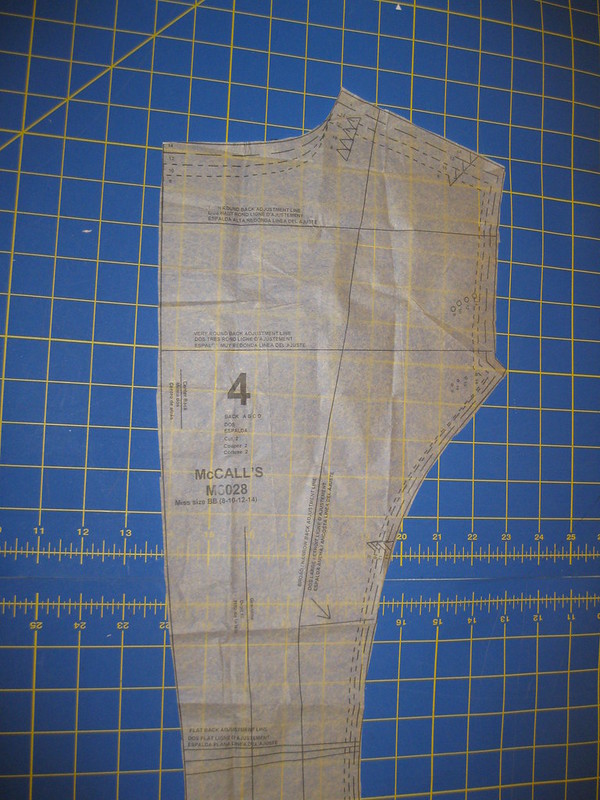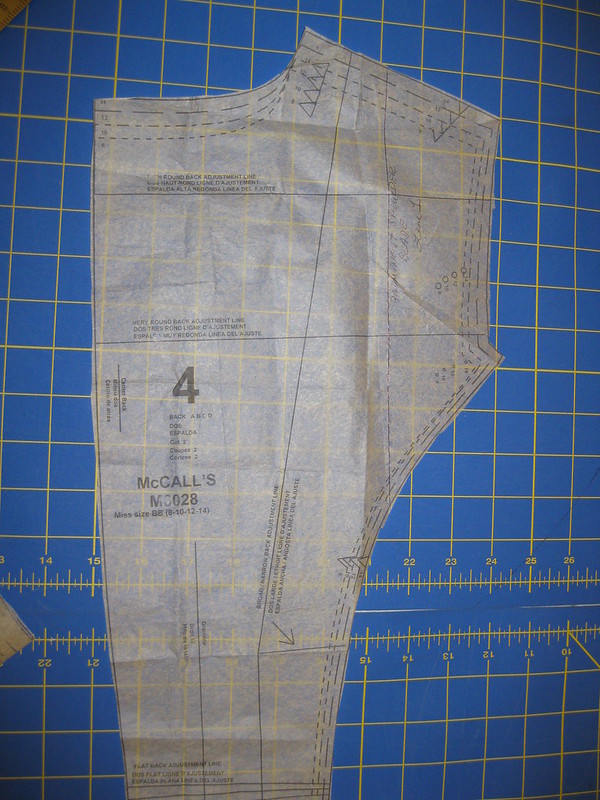With almost every pattern I choose to sew, I must make pattern adjustments. This is true with most blogging sewists. Most of the time. I usually include a snap shot of the completed change that I made to show the results of my personal fitting adjustments. Those pictures don't show the step by step process taken to arrive at the final adjustment.
Weeks before the "prom dress" series, I received a few emails from some of my followers who wanted to get more details on the process of making adjustments. During the same time, I had several conversations with friends about the full bust adjustment (FBA).
So I decided to write a few blog posts detailing the steps I take to make adjustments to the pattern. This post will include details on the full bust adjustment for a princess seam dress (M6028), prominent shoulder blade, raising the armhole of a sleeveless dress, and sway back adjustments. All will be made using M6028. I selected this pattern for three reasons: it's been on my to-make list for a while, it's Palmer/Pletsch (includes the adjustment lines, and it has princess seams.
The Palmer/Pletsch patterns make it easy for you to make most adjustments because the adjustment lines are drawn on the pattern and the guide sheet includes construction details on how to make those adjustments. Princess garments provide many opportunities to make adjustments. You can add width and length to all or some of the pieces to easily fit the various regions of your body.
I must add a disclaimer:
These adjustments are based on fitting adjustments that work for me and should not be viewed as the "standard". They may not work for you. I use the Palmer/Pletsch tissue fitting instructions to help me understand and determine how I can make the best fit adjustment for me.
That being said, I will start the adjustment process with raising the armhole of a sleeveless dress.
This first picture displays the front and back sides of a princess
seam dress. I like to raise the armhole to conceal side boobage. It
looks much nicer without the exposure.
NOTE: These instructions are not found in the guide sheet.
Step 2 -
Next place pattern tissue paper under both pattern pieces having the
tops even.
Step 3 - Next draw a new lower armhole line.
Step 3b - Closer view.
Step 4 - Finally trim away the excess tissue paper.
Full Bust Adjustment (FBA)
Step 1 - With the armhole adjustment already made, layout pattern 1,
2, 3 to make the Full Bust Adjustment (FBA). Palmer-Pletsch patterns include cutting lines for making most pattern
fitting adjustments.
The FBA is a lengthy process, but it is easy to achieve. Just
take your time. Let's start with the front yoke and the front of
McCall's 6028.
This picture shows Line A on the yoke front 3. But Line A is missing
from front 1.
FBA - Here I drew the Line A on the front 1 pattern.
FBA - Slash Lina A on both front yoke 3 and front 1. Spread the desired amount as illustrated in step one of the guide sheet for McCall's 6028.
FBA - Here is how the pattern looks after slashing Line A from the to of the front 1.
FBA - The slash and spread should continue through the hemline on front 1.
FBA - Before trimming the excess tissue paper, true up the upper edge where the front is to join the front yoke 3.
FBA - The added width below the bust area makes the dress too wide for me. So to eliminate that width, I remove the excess from the left side of the pattern by drawing a new line to the end of the hemline. Transfer the notch to the new edge before cutting away the excess tissue.
FBA - This picture shows the new line at the bottom of the pattern (front 1).
FBA - To maintain the slit at the lower section of the pattern, cut along the new line and then across the top of the slit. Save this section so it can be relocated after the remainder of the excess width is cut away.
FBA - After removing the excess width, place the slit section at the lower section lining it up with the cut edge.
FBA - Now let's work with the side front 2, before completing the rest of the adjustment to the front 1. This picture shows the affect of the slash and spread of Line A on the front yoke 3.
FBA - Next, slash and spread the side front 2 the same amount as the front 1. It is important to spread each equal amounts to maintain balance across the front of the dress.
FBA - NOTE - This adjustment is not exactly like Steps 5 through 13. But this works for me. So to continue, This is my adjustment for this side front 2.
FBA - Pictured here is the spread through the hemline. NOTE: slash at hip area to realign the lower portion of the dress.
FBA - Another view of the spread. Also, note the new line drawn under the bust area of the side front 2.
FBA - Now spread the front 1 is the same sections making sure it is the same as on the side front 2.
PSBA - There is no line drawn on the pattern for this adjustment.
PSBA - I typically place a vertical line about 21/2" from the edge of the back pattern at the should seam. Here it is identified as Line 1.
PSBA - Slash the back 4 starting at the base of the PSBA line. Spread the desired amount. True up the spread by drawing a new line. Then cut away excess tissue paper.
PSBA - I usually do not spread the side back 5. There is enough ease along the curve to match up the toe amount of the spread needed for my PSBA. But you may have to slash and spread the side back 5 as well.
Sway Back Adjustment - SBA
This illustrates how the sway back adjustment is done. For M6028 horizontal lines are drawn to indicate where to make the sway back adjustment.
My apologies, I didn't include a photo of the sway back adjustment. Please scroll up to the last picture of the PSBA. There you can clearly see the sway back adjustment lines on the pattern. These lines help you make SBA.
That's it! I hope this was helpful and not confusing.
Happy Sewing!
































